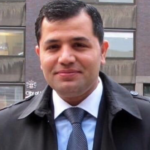Abstract: There is a narrative often told by Iraqi politicians and commentators that Arab Sunnis have excluded themselves from politics by boycotting the post-2003 democratic governance system in Iraq. Proponents of this narrative claim that Sunnis boycotted the new democratic system because they knew they would not be able to retain the privileges they had once enjoyed under the Saddam regime. However, many Iraqi Arab Sunni political figures dispute this narrative. Their counter-narrative is that Arab Sunnis, both Participants and Rejectionists, wanted to participate in the post-Saddam political process, but Shia political parties and the Coalition Provisional Authority (CPA) pursued discriminatory policies against Arab Sunnis. Experts and commentators often blame Arab Sunnis for today’s instability in Iraq, citing the Sunni insurgency after 2003 and the subsequent rise of extremist “Sunni” groups.
As argued in Part I[1] of this three-part series, intra-Sunni divisions are a major cause of instability in Iraq. Yet, Sunnis are neither the only divided group nor the only group from which armed insurgencies emerged. Iraqi Arab Shia groups are also divided both politically and ideologically. Furthermore, several Shia armed groups participated in the armed insurgency that began after 2003 – most notably, the al-Mahdi Army led by Muqtada al-Sadr.
This article argues that while intra-Sunni divisions are certainly detrimental to the stability of Iraq, we should not underestimate the effects of intra-Shia divisions either. This analysis will be contextualised through the narratives of Arab Shia and Sunni politicians who were part of early post-2003 political groups in Iraq.

 Muhanad Seloom
Muhanad Seloom